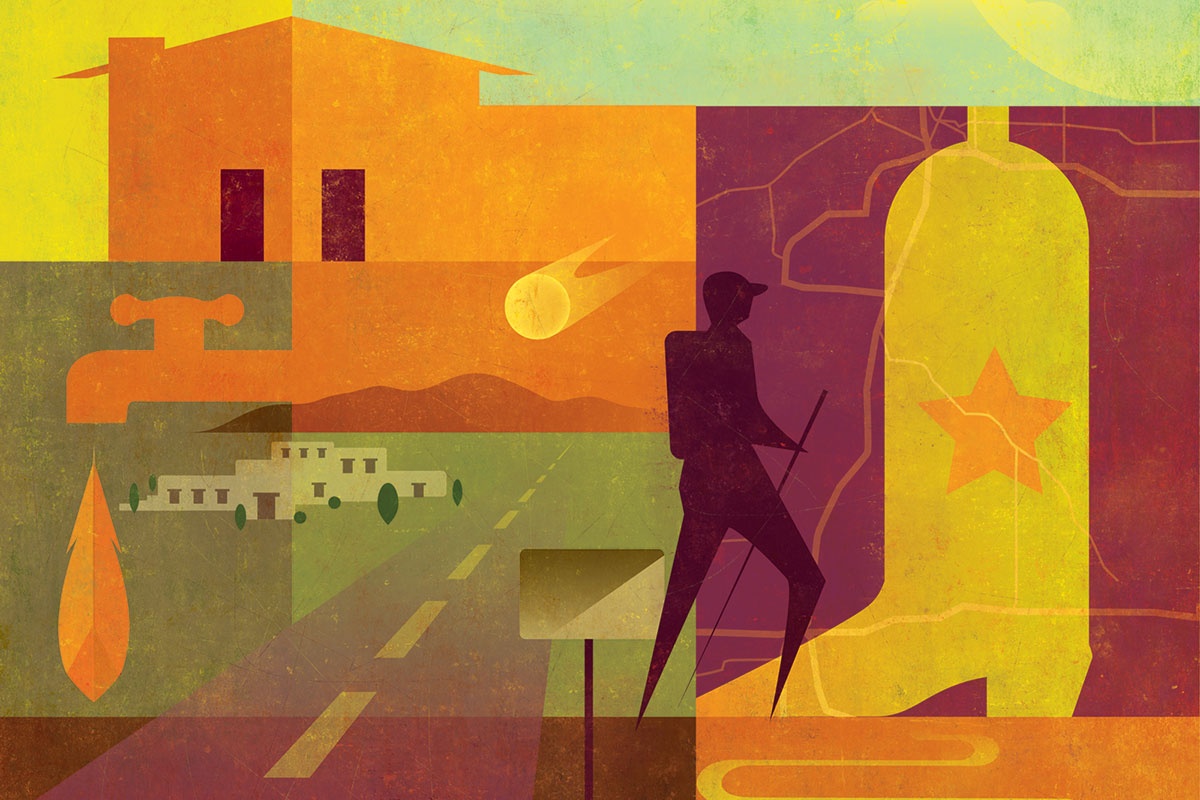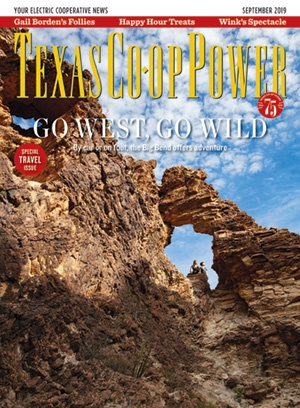Marfa Public Radio station KRTS-FM invites listeners to call in with questions about West Texas. I have fielded a few in conjunction with my weekly program, The Rambling Boy.
Susan Kirr of Marfa wanted to know why several of the old houses on Sacramento Street have two front doors. The two-front-door house is a very old building tradition in America, and its origin is something that people who study vernacular architecture have wrangled about for years. Most scholars agree that houses with two front doors were a German tradition brought to Pennsylvania in the 1700s, and that originally, one door went into a formal public room, such as a parlor, and the other door went into a private, more utilitarian space, such as a kitchen with a cooking fireplace and perhaps a bed.
What no one can agree on is why the form became so popular, how it spread across the country and why it prevailed into the 1940s even when both doors opened into the same room. I favor the climatic theory: The extra door provided additional ventilation in the summertime. I’ll bet that extra door was welcome in Marfa in May and June.
Linda Baronic of Marathon asked, “What’s the story about the Sierra Madera Astrobleme signs between Fort Stockton and Marathon?” The signs were erected by the Texas Department of Transportation along U.S. Highway 67 where the road passes through the geological feature called the Sierra Madera Astrobleme. An astrobleme is a crater caused by a meteor or comet striking Earth. Astrobleme de-rives from a Greek word that means “star wound.”
The Sierra Madera Astrobleme’s outer edge forms a circular cluster of hills about 6 miles in diameter. The uplifted peak in the center of the crater, about 800 feet above the desert floor, is called the Sierra Madera, or wooded mountain. Geologists originally thought that the formation was an oil dome, but drilling showed that there was no dome under the formation; only the upper strata were disturbed by the impact. Geologists at the University of Texas of the Permian Basin estimate that the impact took place fairly recently, less than 1 million years ago.
Guadalupe Espinoza of Marfa wanted to know if it was true that Indian Lodge in Davis Mountains State Park was built on a cemetery and is haunted. It seems like no hotel can show a profit these days unless it is haunted, but I can guarantee you that Indian Lodge was not built over a cemetery. The lodge was built on pastureland in Keesey Canyon donated to the Texas State Parks Board in 1933 by Fort Davis rancher Jesse Merrill and his son R.K. Merrill, adjacent to land donated for the Davis Mountains State Park by Joe Espy. There were no cemeteries on any of that land.
There were problems involved in building the lodge, however. Construction was started by the Civilian Conservation Corps in December 1933 and proceeded in fits and starts. The plans were redrawn at least twice, and the building was not completed until March 1935, way over budget and far behind schedule. The flat roofs leaked, and it took three more years of work to get them to drain properly. Unaccountably, the architects had not included a hot water system, and until one was installed, the manager told guests that there was no hot water because Native Americans did not take hot baths. Perhaps the ghosts that are haunting the lodge today, if indeed there are any, are those of the first visitors who have come back to see if they can get a warm bath. Today, Indian Lodge, having undergone several renovations since 1935, is considered the crown jewel of Texas’ state park system.
And then there is the Toenail Trail, the local name for FM 2084, which runs from Christoval to Fort McKavett in Tom Green and Schleicher counties. David Dunn of Oakland, Mississippi, wanted to know how the road got its name. The short answer is because it runs across the Toenail Ranch. According to Dale Huggins, one of the current owners of that ranch, the ranch takes its name from an incident in the 1880s, shortly after the ranch was founded, when someone asked one of the owners what the new ranch was called. “Don’t have no name,” he replied. “Why, all ranches have names,” his interrogator said. “Why doesn’t yours?” “Well,” the owner replied, “we’re just hangin’ on by our toenails. Guess we haven’t had time to think up a name.” And so it became the Toenail Ranch.
The late Lonn Taylor was historian at the Smithsonian Institution’s National Museum of American History and lived in Fort Davis.


